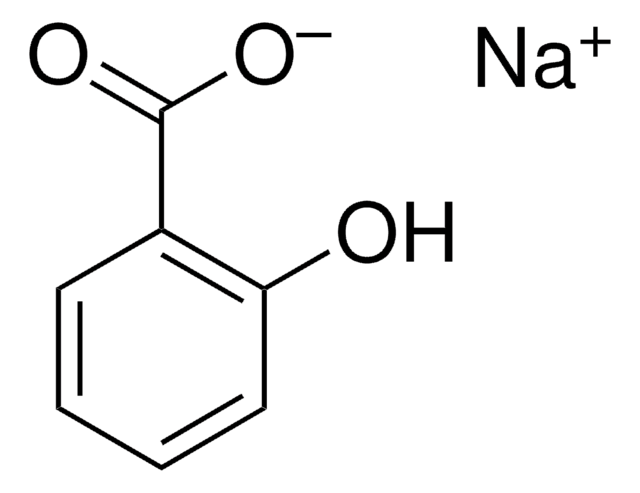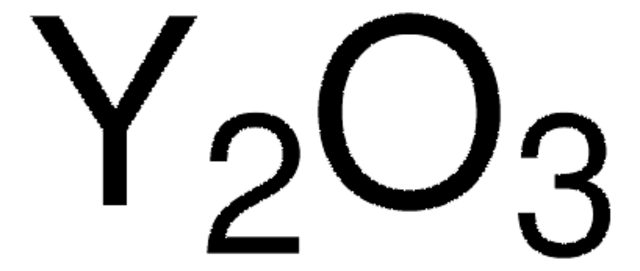202711
Barium carbonate
99.999% trace metals basis
Sinónimos:
Barium monocarbonate, Witherite
About This Item
Productos recomendados
Quality Level
assay
99.999% trace metals basis
form
powder and chunks
impurities
≤15.0 ppm Trace Metal Analysis
SMILES string
[Ba++].[O-]C([O-])=O
InChI
1S/CH2O3.Ba/c2-1(3)4;/h(H2,2,3,4);/q;+2/p-2
InChI key
AYJRCSIUFZENHW-UHFFFAOYSA-L
¿Está buscando productos similares? Visita Guía de comparación de productos
General description
Application
- A precursor for the preparation of BaTiO3 nanoparticles, a dielectric material which is useful for manufacturing multilayer ceramic capacitors.
- A precursor for the synthesis of barium titanate thin films, which finds applications in photovoltaic devices.
Barium carbonate can also be used in following applications:
- BaCO3 nanoparticles have been reported as catalysts for high-temperature oxygen reduction reactions (ORR) in solid oxide fuel cells (SOFCs).
- Barium carbonate-based nanomaterials have been employed for sensor and catalysis applications, with improved sensing performance using one-dimensional nanostructures.
- BaCO3 is used to make barium titanate for Multi-layer ceramic capacitor and composite oxides, as well as for PTC thermistors. It′s also used to make optical glass, sputter glass for semiconductors, and as a component of phosphor materials.
signalword
Warning
hcodes
Hazard Classifications
Acute Tox. 4 Oral
Storage Class
13 - Non Combustible Solids
wgk_germany
WGK 1
flash_point_f
Not applicable
flash_point_c
Not applicable
ppe
dust mask type N95 (US), Eyeshields, Faceshields, Gloves
Elija entre una de las versiones más recientes:
¿Ya tiene este producto?
Encuentre la documentación para los productos que ha comprado recientemente en la Biblioteca de documentos.
Los clientes también vieron
Artículos
Advanced Inorganic Materials for Solid State Lighting
Spectral conversion for solar cells is an emerging concept in the field of photovoltaics, and it has the potential to increase significantly the efficiency of solar cells. Lanthanide ions are ideal candidates for spectral conversion, due to their high luminescence efficiencies and rich energy level structure that allows for great flexibility in the upconversion and downconversion of photons in a wide spectral region (NIR-VIS-UV).
Nuestro equipo de científicos tiene experiencia en todas las áreas de investigación: Ciencias de la vida, Ciencia de los materiales, Síntesis química, Cromatografía, Analítica y muchas otras.
Póngase en contacto con el Servicio técnico









